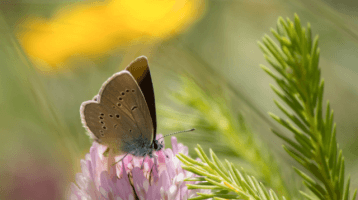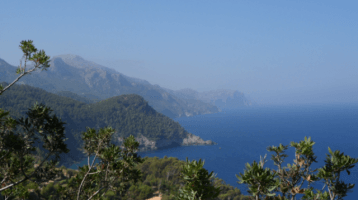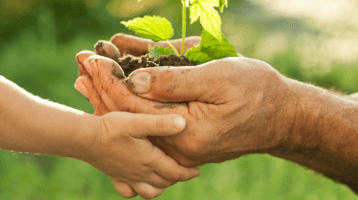Biodiversity of the future
The planet is finely balanced. Our long-term survival is now at risk, but there’s still time to act.
Biodiversity loss – although not reversible – can potentially be stopped in its tracks. We need to become more aware of its importance, constantly raise awareness, and never stop trying to protect it.
Biodiversity, key to a healthy planet
Faced with the global decline in biodiversity, you might think all is lost. The human species has precipitated the loss of several animal and plant species. 70% of known plant species are now threatened with extinction. Because of human activity, species are disappearing up to a thousand times faster than they would otherwise disappear naturally.
So is it too late? No. While it’s hard to calculate losses and anticipate future risks, we must continue taking action to preserve the biodiversity of the planet’s species.
Biodiversity is what keeps the Earth alive and the main indicator of its health. Although our planet is showing many signs of stress, it can still be cured. The human race is responsible for its fragility but, crucially, also has the power to remedy it.
Just like the animals and plants that coexist in an ecosystem, humans have always been able to contribute to the balance of their environment. The earliest breeders and farmers knew how to get the best out of nature without destroying it. As one of the world’s species just like any other, we contribute to the balance of our planet.
The aim is no longer to dominate the diversity of other living things, but to work with that diversity for a better outcome.
There are lots of people on the planet today, and we’re increasingly exploiting its resources. Those resources aren’t inexhaustible. We need to save energy, consume less (and more sensibly), and have a respectful relationship with nature.
And the best way to do that is to live as close to nature as possible, marvel at a butterfly, enjoy homemade blackberry jam... simply get to know nature again!
What about the future? Better understanding means better protection
We can only protect what we know. Through exploration and research, science is helping to protect the biodiversity of tomorrow.
Scientists are investigating today’s biodiversity to better predict and anticipate risks. Through their assessments, we’ll be able to better focus our efforts to manage future biodiversity better.
Biodiversity is a fairly complex concept. It takes into account the number of species in a given environment, their interactions, their position within the food chain, the size of different populations, the genetic diversity of a single species, and more. The indicators we have today depend on the measurements we choose to take and the criteria we choose to apply. For a number of years now, the international community has been relying on various indicators provided by scientists to guide initiatives in accordance with policymaking.
Today, our approach to biodiversity tends to be primarily economic. Scientists study environments and species in terms of what they can offer humans, assessing what their loss could mean for us. This approach remains limited and dangerous, given it only considers species in relation to humans and not part of a balanced collaboration within entire ecosystems.
Science must therefore be able to vary its indicators, measurements and areas of focus. Government institutions and the international community need to know how to look in different directions. Every stakeholder involved in protecting biodiversity has a role to play.
One of these is Klorane Botanical Foundation, whose mission is to preserve and explore the plant world. Because protecting future biodiversity means, first and foremost, learning more about today’s plant species.
We work in partnership with universities, associations and conservatories to support botanical initiatives all over the world.
Let’s protect biodiversity – we’re stronger together!

WHAT IS BIODIVERSITY?
A big word for a big concept! Biodiversity is a relatively recent term in the context of life on Earth, but what exactly does it mean? Klorane Botanical Foundation can help you see more clearly.

WHERE DO YOU FIND BIODIVERSITY?
Biodiversity isn’t just found in remote, unspoiled locations, it’s all around us! From the bottom of the ocean to an urban tree grove, diversity and interactions between different species are what breathe life into our planet’s ecosystems, which we need to preserve at all costs.

PRESERVING BIODIVERSITY
We urgently need to take steps to protect biodiversity, given our ability to ensure our survival on the planet – and that of future generations – depends on it. But why is biodiversity in such danger? And what can we do to help preserve it?
